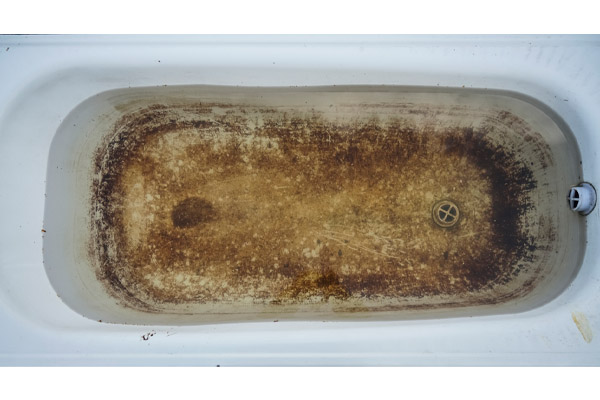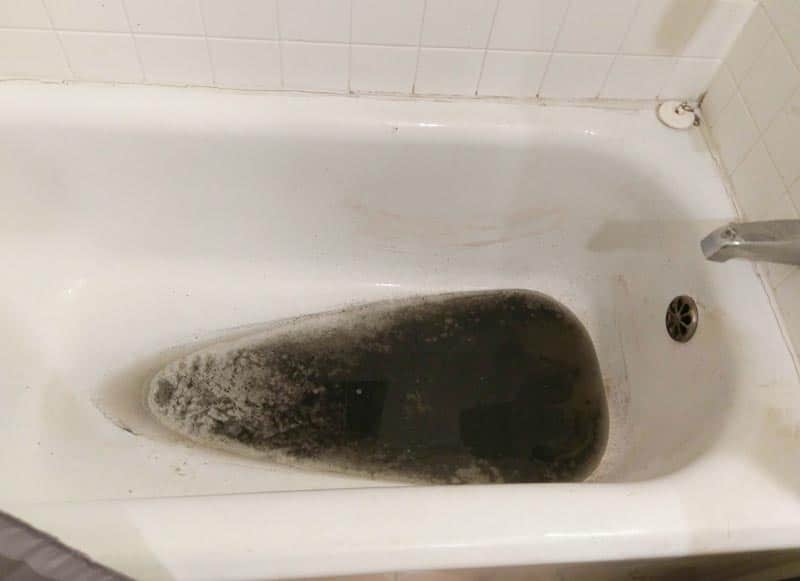Crucial Factors Behind Drainage in the Bathtub
Crucial Factors Behind Drainage in the Bathtub
Blog Article
Just about everyone has got their private perception involving Why sewage is coming up through your bathtub.

Sewage back-up in the tub can be an upsetting and unhygienic issue for any type of house owner. Not just is it bothersome, yet it likewise positions major health dangers and suggests underlying concerns with the plumbing system. Recognizing why sewer is turning up with the bathtub is critical for taking ideal activity to resolve the issue properly.
Intro to the Issue
Usual Reasons for Sewage Backup
Obstructions in the Drain Line
Among the most common root causes of sewer backup is a clog in the sewage system line. This can happen as a result of the build-up of particles, grease, or foreign things in the pipelines, protecting against appropriate circulation and triggering sewage to support into your bath tub.
Tree Origin Invasion
Tree roots looking for moisture and nutrients can penetrate sewer lines through tiny fractures or joints. In time, these roots can grow and expand, triggering considerable damages to the pipelines and resulting in sewage back-up issues.
Understanding the Problem
When sewage starts backing up into the tub, it's a clear indication of a trouble with the water drainage system. The wastewater that must be streaming far from your home is instead locating its way back right into your living space, which can lead to substantial damages and health hazards.
Potential Causes
Numerous factors can add to sewage backup in the bathtub. From clogs in the drain line to problems with the plumbing framework, determining the origin is important for discovering a service.
Aging Framework
Older homes might have outdated plumbing systems that are a lot more vulnerable to corrosion, splits, and degeneration. As pipelines age, they become extra prone to leakages and clogs, boosting the possibility of sewer backup occurrences.
Heavy Rainfall or Flooding
Throughout durations of heavy rainfall or flooding, the drain system might become overloaded with excess water, triggering back-ups and overflows. This can cause sewage supporting into bath tubs and other components inside the home.
Indications of Sewer Backup
Foul Odors
Undesirable smells originating from drains pipes or fixtures, especially in the shower room, might suggest sewer back-up issues. These smells are usually strong and persistent, signifying a problem that requires immediate focus.
Slow Draining Fixtures
Bath tubs, sinks, and commodes that drain slowly or otherwise whatsoever could be experiencing sewer back-up. If numerous components are impacted concurrently, it's most likely that the problem stems from a common factor, such as the primary sewer line.
Gurgling Sounds
Strange gurgling or gurgling sounds coming from drains pipes when water is running elsewhere in your house are a measure of air caught in the plumbing system. This air build-up can result from sewer backup and must be investigated without delay.
Health Dangers Connected With Sewer Back-up
Contamination of Supply Of Water
Sewer backup can infect the supply of water in your house, posing a serious wellness risk to you and your family members. Direct exposure to infected water can result in gastrointestinal problems, skin infections, and other health problems.
Mold Growth
Moisture from sewage backup can develop perfect conditions for mold growth in your home. Mold and mildew spores can aggravate respiratory system issues and create allergic reactions in delicate individuals, making timely cleaning crucial.
Spread of Illness
Sewer consists of dangerous bacteria, viruses, and parasites that can trigger a variety of diseases, consisting of liver disease, cholera, and gastroenteritis. Entering into contact with sewer or infected surface areas puts you at risk of infection.
Tidying up After Sewage Back-up
Sanitation Procedures
Completely disinfect and sterilize affected areas after sewer back-up to get rid of dangerous microorganisms and stop mold and mildew development. Use appropriate cleansing items and safety equipment to make certain secure and effective clean-up.
Reconstruction of Impacted Locations
Fix any type of damage to floor covering, walls, or components triggered by sewage backup. Depending on the level of the damage, you may require to change carpets, drywall, or various other materials to recover your home to its pre-loss condition.
Immediate Actions to Take
Turning Off Supply Of Water
In the event of sewer back-up, it's important to switch off the supply of water to prevent further contamination and damages. Locate the major water shutoff valve in your house and shut it off up until the issue can be settled.
Getting In Touch With an Expert Plumber
Handling sewage backup is not a do it yourself work. Call a qualified plumber with experience in dealing with sewage-related issues to analyze the situation and execute needed repair work or clean-ups.
Avoiding Contact with Polluted Water
Until the sewage backup is resolved, prevent contact with infected water to stop the spread of microorganisms and virus. Put on protective gear if you must remain in the affected area and clean your hands extensively afterward.
Preventive Measures
Normal Maintenance of Drain Lines
Arrange regular inspections and maintenance of your drain lines to determine and address possible problems before they rise right into significant problems. This can include clearing out particles, evaluating for tree root invasion, and repairing any broken pipelines.
Mounting Bayou Shutoffs
Consider mounting bayou shutoffs in your plumbing system to stop sewer from receding into your home during periods of heavy rainfall or flooding. These shutoffs immediately close when water draws back up, safeguarding your property from contamination.
Proper Disposal of Family Waste
Avoid flushing anything besides bathroom tissue and human waste down the toilet to avoid obstructions and obstructions in the drain line. Dispose of oil, oil, and various other household chemicals effectively to decrease the threat of plumbing troubles.
Why Is Water Backing Up in My Bathtub When I Flush My Toilet?
What to do about a sewer line clog
First, don’t bother with plunging. No amount of plunging will dislodge the clog in a sewer line. The clog is too far away. Plungers are for clogs in the toilet itself, not the sewer line. Plus, the most likely causes of a sewer clog are:
Tree roots Flushed toys or feminine products Grease buildup Those items don’t move easily. And in the case of tree roots, the roots need to be cut out of the pipe and the pipe will need to be repaired.
You’ll need a closet auger. A closet auger is a type of plumber’s snake with a protective cover to keep from scratching the delicate porcelain toilet. If the clog is further down, you may need to remove the toilet or use one of your cleanouts to get to the clog.
We also recommend doing a video inspection of the drain to ensure that the cause of the clog has been completely removed. Otherwise, you could have the same problem again in a few days or weeks.
https://mspplumbingheatingair.com/blog/why-is-water-backing-up-in-my-bathtub-when-i-flush-my-toilet

We were introduced to that editorial on What To Do If Sewage Starts Backing Up Into the Shower from a buddy on our other domain. Those who enjoyed our post please don't forget to pass it around. Thanks a bunch for being here. Don't hesitate to visit our blog back soon.
Free Estimates
Report this page